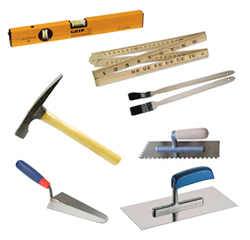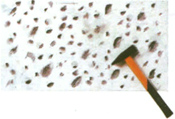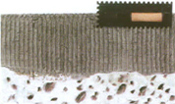| Our Products | ||||
|
||||
1. Introduction Clay fired bricks have been in used for building for their beauty, warmth, and durability of brick houses for thousand of years. The distinctive features of the traditional brick houses can be reclaimed for the walls that built with plain plastered furnishes or other alternative materials by replacing with brick veneers at economical cost. Brick veneer is a relatively new product which is seeing increasing popularity in commercial, residential and do-it-yourself markets. Brick veneer is produced from shale or clay and are kiln-fired. These brick veneers are much like facing brick, except they are approximately 10 to 50mm thick. The face sizes are normally the same as conventional brick and therefore, when in place, give the appearance of a conventional brick masonry wall. The selection of brick veneer is based on its colors, textures, and finishes. As with all other fired clay or shale products, color depends on the chemical composition of the raw material, the intensity of firing and controls used in the firing. The color ranges for brick veneer units are as unlimited as those for other fired clay brick. The texture of brick veneer depends on the method of manufacture and the surface treatment used prior to firing or after firing. Special shapes of thin brick can be used to create sills, cornices, quoins, and other ornament architectural details. While most commonly used for remodeling applications, brick veneers are also used in new construction where the substantial weight of full thickness masonry is a consideration. Brick veneers from Claybricks are available in various sizes, colors, and textures. The most common size is 215 x 67 x 10mm. Other sizes such as 215 x 135 x 30, 215 x 270 x 30, 215 x 405 x 30 mm, and etc. are also available and suitable for large buildings. |
||||||||||||||||
|
||||||||||||||||
For large scale projects, brick veneer have been placed into forms and cast integrally with concrete, thus providing a very attractive architectural prefabricated panel. Another procedure involves bonding brick veneer to a substrate of convenient size, resulting in small, lightweight, easily installed modular panels. |
||||||||||||||||
Primarily, brick veneer functions as an architectural wall covering that ahs the maintenance-free benefits of conventional brick masonry. Secondly, brick veneer provides some protection to the material over which it is applied.
|




